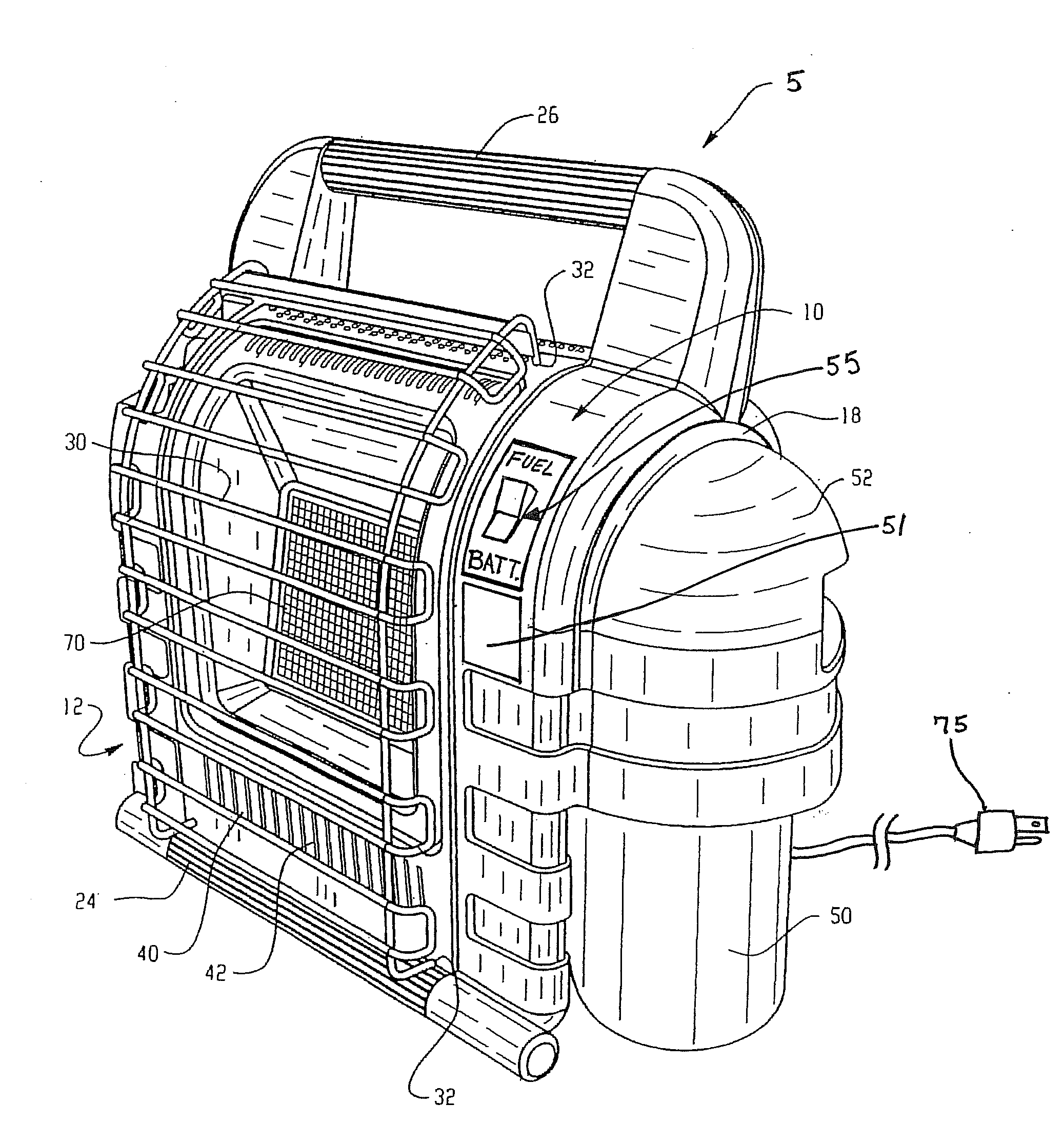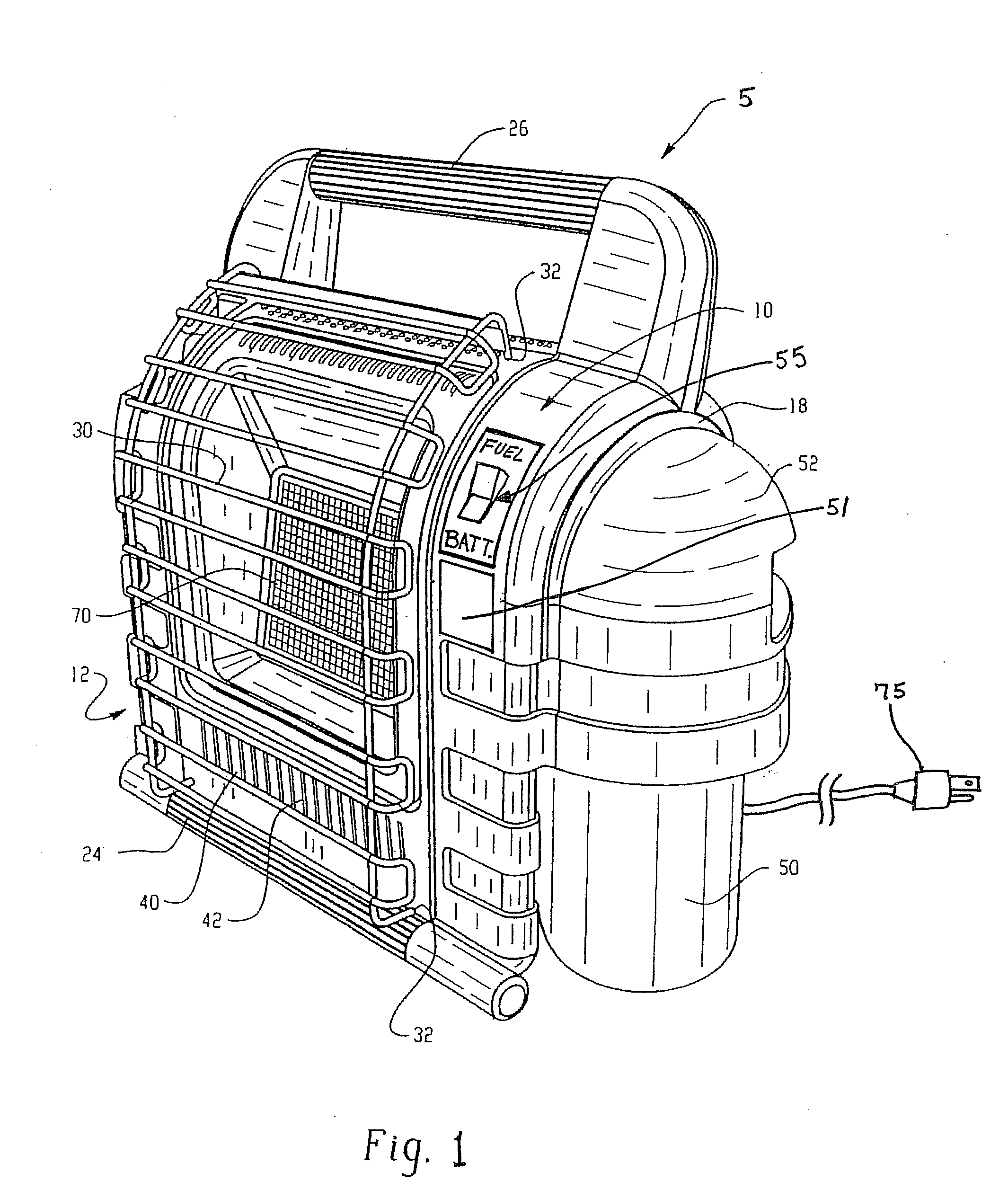Heat and/or Light Producing Unit Powered by a Lithium Secondary Cell Battery with High Charge and Discharge Rate Capability
- Summary
- Abstract
- Description
- Claims
- Application Information
AI Technical Summary
Benefits of technology
Problems solved by technology
Method used
Image
Examples
Embodiment Construction
[0030]Certain terminology is used herein for convenience only and is not to be taken as a limitation on the present invention. Relative language used herein is best understood with reference to the drawings, in which like numerals are used to identify like or similar items. Further, in the drawings, certain features may be shown in somewhat schematic form.
[0031]The Figures show the novel invention of providing a high capacity, high charge rate lithium secondary cell battery or other self-contained source of electric energy (referred to generally herein as a “battery”) for use as an alternative or supplemental energy source providing at least a portion of the operating or accessory power for a heating unit, lighting unit, end use application requiring the same, or any combination thereof.
[0032]A portable heating unit, hereinafter referred to as a heater 5, according to an embodiment of the present is shown in FIG. 1. The heater 5 is supported by two elongated legs 24 laterally dispos...
PUM
 Login to View More
Login to View More Abstract
Description
Claims
Application Information
 Login to View More
Login to View More - R&D
- Intellectual Property
- Life Sciences
- Materials
- Tech Scout
- Unparalleled Data Quality
- Higher Quality Content
- 60% Fewer Hallucinations
Browse by: Latest US Patents, China's latest patents, Technical Efficacy Thesaurus, Application Domain, Technology Topic, Popular Technical Reports.
© 2025 PatSnap. All rights reserved.Legal|Privacy policy|Modern Slavery Act Transparency Statement|Sitemap|About US| Contact US: help@patsnap.com



